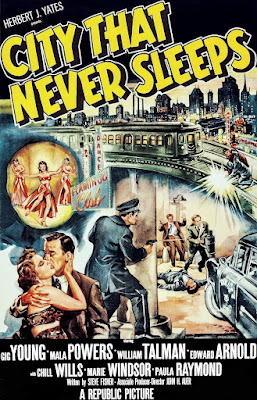Mrs. Homicide / Naked Fury /
Murder on the Side
by Day
Keene
Stark
House Press, 2024
Stark House’s latest Day Keene compilation
is available in bookstores everywhere. It is a good one, too. Even better—for me,
not for the readers since Keene’s novels are the draw—it includes my essay, “The
Name is Day Keene,” as an Introduction. My name is even on the cover. How about that? I highly recommend Day Keene’s writing,
and if you like mid-century hardboiled crime fiction you will love Mrs.
Homicide / Naked Fury / Murder on the Side.
Retreats from Oblivion reviewed Mrs. Homicide / Naked Fury / Murder on the Side here. I’m even mentioned!
Here
is the publisher’s description:
Mrs. Homicide
Everyone in the homicide squad knows that Herman
Stone’s wife Connie is cheating on him. They’d all seen her with Lyle Cary. So
when she is arrested in Cary’s apartment, drunk and nude, with his murdered
body on the bed they had obviously just shared, they all assume she’s guilty.
Except, of course for Stone. The husband may be the last to know, but Connie
claims she is innocent. She’s never even met Cary, much less killed him. It’s
almost more than Stone can believe. But in trying to prove her innocence, he
soon finds himself up against not only the witnesses, but the entire police
force!
Naked Fury
There’s been a fatal hit-and-run in the poor
part of town. And now the only witness has been beaten to death as well. Big
Dan Malloy runs this part of town and makes it his business to take care of his
people. So he starts to investigate the deaths. It all points to a man in a
large, dark blue car. But the official police report is now saying it was a red
coupe driven by a woman—which can only mean that someone has fingered Katie,
Malloy’s girl. Meanwhile, Malloy is working hard on an election that should bring
some real change to his part of town. But with so much on the line, who can he
really trust?
Murder On The Side
Larry Hanson should have been a successful engineer instead of the glorified accountant he is. Now in his mid-40s, he has grown bored with his job, his wife. Then his secretary Wanda calls one evening and asks for his help. Her ex-boyfriend, just released from prison, had been trying to drunkenly rape her. She hit him with a lamp, and thinks she killed him. Hanson finds the young man unconscious and takes him away, dropping him at a nearby park. Grateful, Wanda offers herself to Hanson. The next morning, he feels like a new man. Then he reads the morning paper—Wanda’s boyfriend was found dead in the park… murdered. And Holden is the most likely suspect!
Click here to purchase the Kindle edition or here
for the paperback.
Click
here to purchase this book at Stark House’s website.









